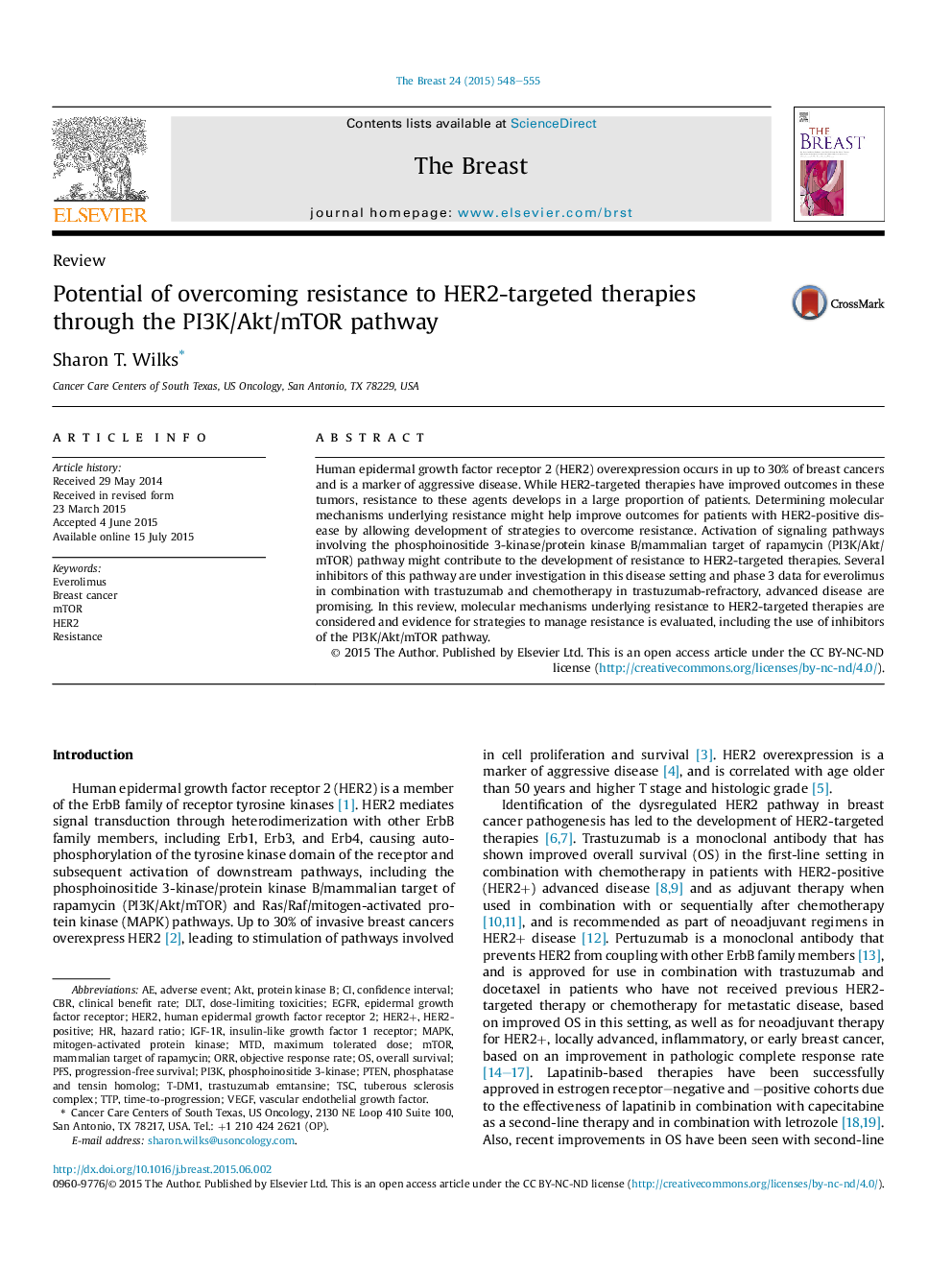| Article ID | Journal | Published Year | Pages | File Type |
|---|---|---|---|---|
| 6169812 | The Breast | 2015 | 8 Pages |
â¢While therapies targeting HER2 have improved outcomes, patients develop resistance.â¢Determining molecular mechanisms of resistance to HER2 therapies may improve outcomes.â¢Targeting the PI3K/Akt/mTOR pathway may be an effective therapeutic strategy.
Human epidermal growth factor receptor 2 (HER2) overexpression occurs in up to 30% of breast cancers and is a marker of aggressive disease. While HER2-targeted therapies have improved outcomes in these tumors, resistance to these agents develops in a large proportion of patients. Determining molecular mechanisms underlying resistance might help improve outcomes for patients with HER2-positive disease by allowing development of strategies to overcome resistance. Activation of signaling pathways involving the phosphoinositide 3-kinase/protein kinase B/mammalian target of rapamycin (PI3K/Akt/mTOR) pathway might contribute to the development of resistance to HER2-targeted therapies. Several inhibitors of this pathway are under investigation in this disease setting and phase 3 data for everolimus in combination with trastuzumab and chemotherapy in trastuzumab-refractory, advanced disease are promising. In this review, molecular mechanisms underlying resistance to HER2-targeted therapies are considered and evidence for strategies to manage resistance is evaluated, including the use of inhibitors of the PI3K/Akt/mTOR pathway.
